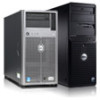Dell PowerEdge T320 Owner's Manual - Page 18
Memory Indicator, Health Indicator - memory configuration
 |
View all Dell PowerEdge T320 manuals
Add to My Manuals
Save this manual to your list of manuals |
Page 18 highlights
Health Indicator Condition Corrective Action Invalid memory configurations can cause the system to halt at startup without any video output. See Getting Help. Hard-drive Indicator Condition The indicator lights green to indicate hard-drive activity. Corrective Action None required. Electrical Indicator Condition The indicator blinks amber if the system experiences an electrical error (for example, voltage out of range, or a failed power supply or voltage regulator). Corrective Action See the System Event Log or system messages for the specific issue. If it is due to a problem with the power supply, check the LED on the power supply. Re-seat the power supply by removing and reinstalling it. If the problem persists, see Getting Help. Temperature Indicator Condition The indicator blinks amber if the system experiences a thermal error (for example, a temperature out of range or fan failure). Corrective Action Ensure that none of the following conditions exist: • A cooling fan is removed or has failed. • System cover, cooling shroud, EMI filler panel, memory- module blank, or back-filler bracket is removed. • Ambient temperature is too high. • External airflow is obstructed. See Getting Help. Memory Indicator Condition The indicator blinks amber if a memory error occurs. Corrective Action See the system event log or system messages for the location of the failed memory. Reinstall the memory device. If the problem persists, see Getting Help. 18















